#common groundsel
Explore tagged Tumblr posts
Text

groundsel/old-man-in-the-spring is new.for me but it's absolutely beautiful and super cool!
Saturday April 20th 2024 11:57am
#2024#april#nature#flower#groundsel#old man in the spring#plant#ragwort#daisy family#common groundsel
1 note
·
View note
Text
Surprise Visit To A Native Prairie
Native prairie on 5-5-25. Hello everyone! I hope this post finds you well. Sunday evening, a friend contacted me and asked if I wanted to go to a native prairie on Monday. Of course, I said yes. On the way there, he told me a little about the place. It is privately owned farm that has never been plowed, grazed, or planted. It gets bailed in September every year which is why it is short now. There…

View On WordPress
#Baptisia leucophaea (Cream Wild Indigo)#Camassia scilloides (Wild Hyacinth/Atlantic Camas)#Castilleja coccinea (Indian Paintbrush)#Comandra umbellata (Bastard Toadflax)#Hypoxis hirsuta (Yellow Star Grass)#Lithospermum canescens (Hoary Puccoon)#Packera plattensis (Prairie Groundsel/Prairie Ragwort)#Pedicularis canadensis (Wood Betony/Canadian Lousewort/Common Lousewort)#Phlox pilosa (Prairie Phlox)#Primula meadia (Common or Eastern Shooting Star)#Sisyrinchium albidum (White Blue-Eyed Grass)
0 notes
Text
Butterfly and the Old Man

A Lesser Grass Blue (Zizina otis lampa) feeding on a flower of what looks like the Old-Man-in-the-Spring or Common Groundsel (Senecio vulgaris) in the shade of a Shaving Brush Tree. Photo credit: Jonathan Chua.
#photographers on tumblr#butterfly photos#canon eos rp#canon photography#flora fauna#insect pics#lesser grass blue#macro photography#tamron 16-300mm#Zizina otis lampa
28 notes
·
View notes
Text

苦菜 / Kucai (Chinese sowthistle stir-fry)
Common sowthistle (Sonchus oleraceus) is a hardy flowering plant in the family Asteraceae (alongside, for example, daisies, sunflowers, and dandelions). It is native to Europe and West Asia, but appears throughout the Americas, East Asia, Australia, and New Zealand. It is a common weed in recently disturbed soil, and sometimes pops up among and competes with cultivated crops.
Sowthistle is eaten as a bitter green in Chinese cuisine. The word "苦菜" (Mandarin Pinyin: kǔcài), from "苦" "kǔ" "bitter" + "菜" "cài" "vegetable" or "greens," is often used to refer to sowthistle—though it may also designate other bitter greens, including garlic chives.
This recipe prepares sowthistle as Chinese bitter greens are generally prepared: blanched in salted water, then fried with ginger and garlic. The sweetness and pungency of the aromatics round out the earthy bitterness of the sowthistle, making a dish that's excellent as a side with soup or rice. Here, I used it to top a fried tofu sandwich with a soy-sesame-ginger sauce.
Recipe under the cut!
Patreon | Paypal | Venmo
Identifying common sowthistle
Young plants grow from a rosette of waxy leaves with deep triangular lobes. Leaves growing from the stem are alternate (one leaf per node), simple (not divided into leaflets) and pinnatifid (divided, but the divisions do not go all the way to the midrib). Leaves have hairless midribs and clasp the stem at their base.
Stem is hairless and mostly unbranched, except near the apex. Stems terminate in clusters of flowers which are yellow when in bloom. Mature leaves and stems produce a white, milky latex when broken; not toxic, though quite bitter.





Young leaves, top two; mature plants, last three
If the leaf margins are covered in sharp spikes, you may be looking at spiny sowthistle. This plant is also edible, though it may not be worth the trouble to remove the spines to eat the mature leaves. Younger leaves, which generally form towards the center of the rosette, have softer spines and are edible without processing.


Young prickly sowthistle, left; mature prickly sowthistle, right
Common sowthistle may also be confused with common groundsel. Groundsel exudes a clear, not a milky, sap when broken, and its leaves are more deeply lobed. It is more densely branched and its leaves are waxier. Common groundsel is toxic and should not be consumed in large quantities.

Common groundsel
Ingredients:
Large bunch common sowthistle leaves (Sonchus oleraceus), preferably young
1/2-inch chunk (5g), scrubbed and thinly sliced
2 cloves garlic, peeled and sliced
Neutral oil, to fry
Toasted sesame oil, to top
Salt, to taste
Instructions:
1. Wash leaves thoroughly in a bowl filled with water. Pull leaves out to allow dirt to sink to the bottom. Repeat.
2. Boil leaves in salted water for about 10 minutes, until tender.
3. If desired, soak in cool water for 1-3 hours to remove some of the leaves' bitterness.
4. Heat oil in a wok or frying pan on medium-high. Fry ginger and garlic for 30 seconds, until fragrant. Add leaves and fry a minute or two.
5. Remove from heat and stir in sesame oil. Taste and adjust salt. Add a dash of mirin or rice vinegar to balance the bitterness, if desired.
55 notes
·
View notes
Note
For prefixes, how about Broom- and Groundsel- for yellow/golden cats? Scotch broom and common groundsel are plants native (I’m like 99% sure) to the UK with yellow flowers.
Groundsel- could maybe also apply to a white cat because of the pappus (plant term for the fluffy seed head found on dandelions and other weeds).
I do love the prefix Broom- a lot. I'll throw this to Lynx and we'll check it out!
16 notes
·
View notes
Text

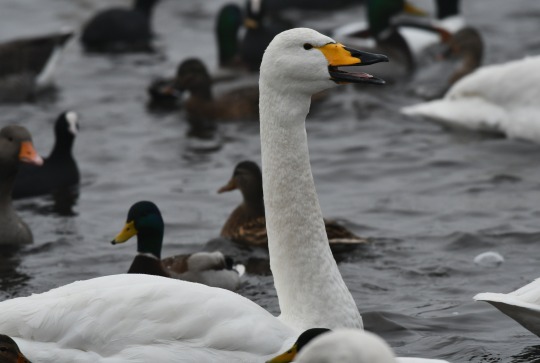








Ten of my favourite photos taken in January 2025 and month summary
The photos are of; Firecrest at Lakeside Country Park, Whooper Swan with Mallards, Shelduck, Greylag Goose and Coot and Ruff with a Mallard at WWT Martin Mere, Great Crested Grebes and chicks at Lakeside, Fox at Pennington, teasel seed heads and willow bracket fungi at Lakeside, sunset at Southport, sun shining through trees at Lakeside and view at Toyd Down.
I had a swashbuckling start to my birdwatching year this month. We had an amazing week off filled with brilliant birdwatching centring on the amazing trip to the north west to visit WWT Martin Mere where between there and Southport where we stayed immersive scenes of masses of Whooper Swans, pristine Pink-footed Geese, Ruffs, Black-tailed Godwits, Lapwings, many Shelducks, Pintails, Pochard, Water Rail, Cetti’s Warbler, Reed Bunting, Snow Bunting, Marsh Harriers a star throughout the month, Fieldfare and Great Spotted Woodpecker were splendid to observe. Treecreeper was seen too a bird I had a phenomenal start to the year for seeing spotting them at a few locations and fabulous Firecrest and stylish Siskins were another two bright birds I enjoyed smashing views of at home especially on patch at Lakeside Country Park. A remarkable five grebe species spotted in the space of six days including stunning views of Black-necked Grebe, Red-necked Grebe and Slavonian Grebe, dashing ducks rarities Scaup and Green-winged Teal, fantastic views of a rare Lesser Yellowlegs and fine Barn Owl views were other highlights down south. Also starring in the very first days of the year and during the week off were Cattle Egret, Spoonbill and Glossy Ibis, Sanderling, Purple Sandpiper, Green Sandpiper, Ringed Plover, Grey Plover, Golden Plover, Spotted Redshank, Snipe, Great Northern Diver, Guillemot, Common Gull, Great Black-backed Gull, Kingfisher, Goldcrest, Bullfinch, Greenfinch and Green Woodpecker.
As the month went on I was stunned to see majestic White-tailed Eagle and Long-eared Owls over one extraordinary weekend with Raven, fine Black Redstart and Red-legged Partridge seen too, Grey Partridge and Corn Bunting were fantastic farmland birds to see, Redwing was a great bird to see at Lakeside and the Peregrine pair of Winchester were special to see in the new year. Notable locally also was the extraordinary scene of a Great Crested Grebe pair with adorable humbug chicks already and some movements towards courtship and breeding for others around in our ever-changing world. I really enjoyed doing the RSPB Big Garden Birdwatch again this month with Woodpigeon, Blue Tits, Goldfinches and numerous Starlings among the key species I saw. I also enjoyed seeing Grey Wagtail, Redpoll, Ring-necked Parakeet and Little Grebe this month. I’ve been lucky to see an extraordinary amount of birds this month competing well with the numbers my very best past year lists have ended January on.
I started my mammal year well too with fantastic Fox views at Pennington, Sika Deer in Dorset on the way to Weymouth and Portland, Brown Hares and Common Seals in Langstone Harbour key sightings and good views of Roe Deers and Grey Squirrels. I saw some impressive spiders at home and a few Grey Silverfish. There were some interesting plants around with red campion, red deadnettle, white deadnettle, petty spurge, annual mercury, yarrow, ivy, periwinkle, cow parsley, groundsel, gorse, daisy, dandelion, hazel catkins, violet, winter heliotrope, winter aconite, crocus and snowdrops and daffodils hinting of spring pretty species seen flowering. Seed heads including teasel, wild carrot, old man's beard and fleabane, cuckoo-pint and thistle leaves and firethorn and privet berries and rose hips were other appealing plant sights this month. Moss and lichen including fairnose cartilage lichen were good to see. There were some great fungi moments with turkey tail and scarlet elf cups enchanting the woods of Blashford Lakes and willow bracket and birch polypore at Lakeside.
I got to take in some stunning landscapes this month including headland, beach and other coast, wetland and marsh, lakes, river, farmland, heathland and woodland and winter gripped the landscape at times from icy and frosty scenes to dramatic blustery weather. There were some stunning winter sunsets especially in Southport and the New Forest and addictive views of the moon with Mars beside at one point which I thoroughly enjoyed taking in.
#photography#birdwatching#january#2025#lakeside#lakeside country park#southport#eastleigh#fox#new forest#pennington#outdoors#england#uk#world#nature#home#walking#beginnings#winter#europe#firecrest#whooper swan#white-tailed eagle#scarlet elf cup#red campion#toyd down
7 notes
·
View notes
Text
Botanical Profile of Common Groundsel (Senecio vulgaris)
Overview of Senecio vulgaris Common groundsel, scientifically named Senecio vulgaris L., belongs to the Asteraceae family, widely recognized as the daisy or sunflower family. Commonly referred to as groundsel, old-man-in-the-spring, ground glutton, or Grundy swallow in English, this resilient, annual herb is prevalent across temperate regions globally. Botanical Characteristics Plant…
0 notes
Text
Frühlingskraftpaket - Spring Power Pack
roh, vegan, gluten- und zuckerfrei - raw, vegan, gluten- and sugarfree

Da meint man es ist alles schon mal geschrieben, alles schon mal fotografiert worden und dann stellt man fest, dass eine Erinnerung irgendwie doch manchmal ganz gut sein kann ;)
Nachdem immer mehr Celebrities mit einem grünen Smoothie gesichtet wurden, das Angebot an Saftpulver immer sortenreicher wird und sowieso jeder gesundheitsbewußte Mensch ihn kennt, zubereitet und genießt, hätte man denken können, dass er gar nicht mehr grossartig erwähnt zu werden braucht.
Doch dann kommt wieder das Frühjahr und man entdeckt erneut Pflanzen die durchaus essbar und im grünen Smoothie landen dürfen, die man über den Winter tatsächlich vergessen hatte. So erging es mir mit dem Baldrian.
Ganz nach Gewohnheit griff ich zu meinem rohköstlichen Smoothiepulver aus Gersten- und Weizengras mit den Algen Spirulina und Chlorella angereichert und gab lediglich ein paar Brennesselspitzen hinzu. Doch jetzt wo es nach der langen Trockenheit wieder etwas geregnet hat, kommen sooo viele Pflanzen zum Vorschein, dass man das fertige Pulver getrost für den Winter aufheben kann.
Neben den üblichen Verdächtigen wie Löwenzahnblätter und -blüten, Brennnesselspitzen, Giersch und Wegerich, können z. B. auch Triebspitzen und junge Blätter des Baldrians, oder Rainkohl, Ehrenpreis, Gundermann, Günsel, Gänseblümchen und Schafgarbe hinein. Die bunte Vielfalt bietet einen enormen Reichtum an Nährstoffen, da hat eine Frühjahrsmüdigkeit keine Chance mehr.
Dann lasst uns doch von dieser besonderen Frühjahrsqualität genießen und von ihren Vorteilen profitieren.
You think it's all been written before, everything has been photographed before and then you realize that a reminder can somehow be quite good ;)
Now that more and more celebrities have been spotted with a green smoothie, the range of juice powders on offer is becoming increasingly varied and every health-conscious person knows, prepares and enjoys it anyway, you might have thought that it no longer needed much mentioning.
But then spring comes around again and you rediscover plants that are perfectly edible and can end up in a green smoothie that you had actually forgotten about over the winter. That's what happened to me with valerian.
As usual, I used my raw food smoothie powder made from barley and wheat grass enriched with spirulina and chlorella algae and just added a few nettle tips. But now that it has rained again after the long drought, sooo many plants are appearing that you can safely save the finished powder for the winter.
In addition to the usual suspects such as dandelion leaves and flowers, nettle tops, goutweed and plantain, you can also add shoot tips and young leaves of valerian, for example, or ragwort, speedwell, ground ivy, common honeysuckle, common groundsel, daisies and yarrow. The colorful variety offers an enormous wealth of nutrients, so spring fatigue no longer stands a chance.
Then let's enjoy this special spring quality and benefit from its advantages.
0 notes
Text
0 notes
Text
Richard Eitzel on the Challenges and Rewards of Hiking Kilimanjaro
Nestled within the core of East Africa, the majestic Mount Kilimanjaro serves as a welcoming beacon to thrill-seekers worldwide, much like Richard Eitzel, a seasoned hiker. Towering 19,341 feet (5,895 meters) above sea level, this dormant stratovolcano claims the title of not just Africa’s tallest peak, but also as one of the planet’s most approachable major summits. For extreme hikers such as Eitzel, the experience of trekking Kilimanjaro summons both exceptional challenges and unparalleled rewards, thus earning a spot on many adventurers’ bucket lists.
A Test of Physical and Mental Resilience
The hike to the summit of Kilimanjaro is not for the faint of heart. It’s a grueling test of physical fitness and mental toughness. The various routes up the mountain offer diverse challenges, but they all share a common denominator: altitude. As you ascend, the air becomes thinner, making each step feel like an uphill battle. Altitude sickness, characterized by symptoms such as nausea, dizziness, and shortness of breath, can strike even the fittest hikers. Proper acclimatization and a gradual ascent are key to mitigating these risks.
The Range of Route Choices
Kilimanjaro offers several routes, each with its own unique charm and level of difficulty. The Marangu Route, often dubbed the “Coca-Cola Route” due to its relative ease and availability of amenities, is popular among beginners. The Machame Route, known as the “Whiskey Route,” presents a more challenging climb through diverse landscapes. The Lemosho Route is celebrated for its breathtaking scenery, while the Rongai Route offers a more remote and less crowded experience. Choosing the right route is crucial to tailoring your Kilimanjaro adventure to your preferences and abilities.
A Journey Through Ecological Zones
One of the most remarkable aspects of hiking Kilimanjaro is the dramatic change in ecosystems as you ascend. The mountain’s unique geography allows you to traverse several ecological zones, each with its own distinct flora and fauna. You’ll start your journey in lush rainforests, where vibrant flora and the songs of exotic birds surround you. As you ascend, you’ll pass through heath and moorland, where strange, otherworldly plants like the giant groundsels and lobelias thrive. Finally, you’ll reach the alpine desert, a barren yet hauntingly beautiful landscape that leads to the summit.
The Challenging Summit Push
Richard Eitzel, like all extreme hikers, aspires to reach the pinnacle of the Kilimanjaro expedition, Uhuru Peak. This highest point on the mountain presents a formidable test of not just physical fortitude, but mental resilience. Hikers, like Eitzel, embark on the summit push in the early morning hours, navigating the frosty conditions and treacherous landscape, often under the meager illumination of headlamps. As dawn breaks, illuminating the African plains sprawling beneath in a mystical glow, the feelings of achievement and awe are unparalleled. Standing atop Uhuru Peak, hikers like Richard Eitzel experience a profound sense of being on top of the world, in every sense of the phrase.
The Importance of Guides and Porters
Kilimanjaro is not a mountain to be tackled alone. Experienced guides and porters are essential to a safe and successful ascent. These local experts possess an intimate knowledge of the mountain, its ever-changing conditions, and the best strategies for acclimatization. They also carry the bulk of your equipment and supplies, allowing you to focus on the hike itself. Interacting with your guide and porter team can be one of the most rewarding aspects of the journey, as you learn about their culture and way of life.
Wildlife Encounters
Kilimanjaro is not just about conquering a peak; it’s also about experiencing the unique wildlife that thrives on its slopes. While you won’t find the big game you’d encounter on a traditional safari, you may spot creatures like colobus monkeys, blue monkeys, and a variety of bird species. The mountain’s isolation and altitude have created a microcosm of life that is fascinating to observe as you make your way up.
The Rewards of Perseverance
The feat of conquering Kilimanjaro’s summit, as experienced by Richard Eitzel, is an accomplishment of immense magnitude, a testament to human resilience both physically and mentally. This pinnacle moment is etched in one’s memory for a lifetime, signifying a triumph over personal limitations and the embodiment of human potential. As hikers stand victorious atop Uhuru Peak, they are greeted by an unparalleled panoramic vista, with the diverse African landscapes unfurling beneath them. This moment of elation underscores the notion that the most rewarding experiences often sprout from the seeds of the most strenuous endeavors.
The Impact of Climate Change
Sadly, Kilimanjaro’s iconic glaciers are rapidly receding due to climate change. The stark contrast between the glacier-covered peak captured in historical photographs and the present-day reality is a sobering reminder of the environmental challenges our planet faces. Hiking Kilimanjaro today is not just about personal achievement; it’s an opportunity to witness firsthand the effects of climate change and to support efforts to mitigate its impact.
Cultural Immersion
Kilimanjaro is not just a mountain; it’s a symbol of Tanzania’s rich cultural heritage. The Chagga people, who have lived in the shadow of the mountain for centuries, have a deep spiritual connection to it. Engaging with local communities, learning about their customs, and participating in cultural exchanges can be a profoundly enriching aspect of your Kilimanjaro adventure. It’s a chance to gain a deeper understanding of the people who call this region home.
The Indelible Memories
Undeniably, embarking on the journey to conquer Kilimanjaro is more than just an exhilarating adventure; it’s a transformative experience that imprints lasting memories in one’s mind. The solidarity formed with fellow hikers, the awe-inspiring vistas, the deep sense of achievement upon reaching the summit, and the enriching interactions with the local culture are enduring takeaways that linger long after the descent from the mountain. Richard Eitzel, like many extreme hikers, finds that Kilimanjaro becomes an integrated part of their identity, emblematic of the tremendous feats attainable when steadfastly pursuing a challenging ambition.
Hiking Kilimanjaro is a monumental undertaking that combines physical challenge, breathtaking natural beauty, and cultural immersion into a single, unforgettable adventure. It’s a journey that tests your limits, rewards your determination, and leaves you with a profound appreciation for the wonders of the natural world. As you stand on Uhuru Peak, the Roof of Africa, you’ll not only have conquered a mountain but also discovered a deeper connection to the world and the people who call it home. Kilimanjaro is more than a destination; it’s an experience that will resonate with you for a lifetime.
0 notes
Photo
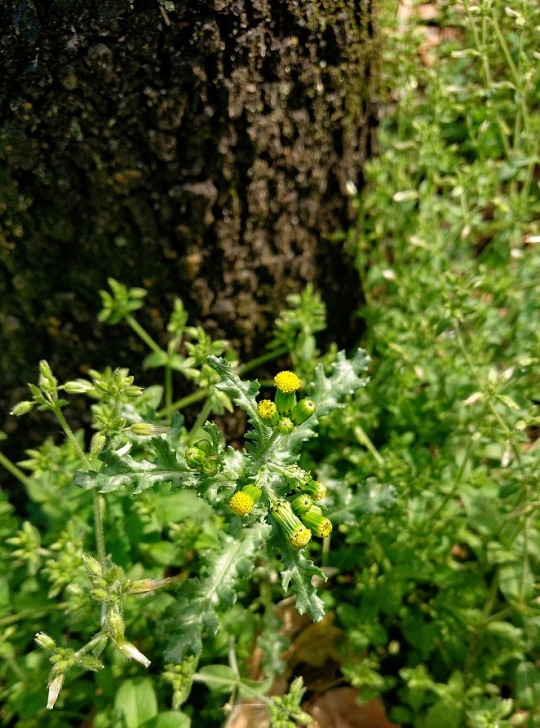
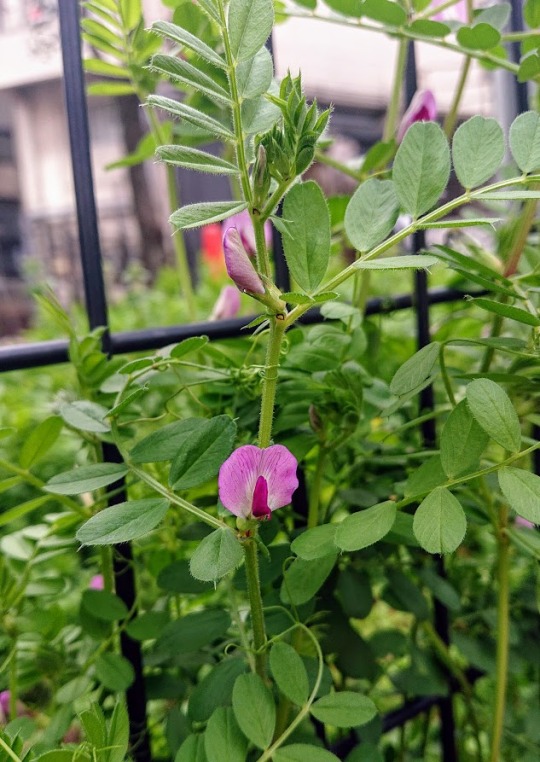
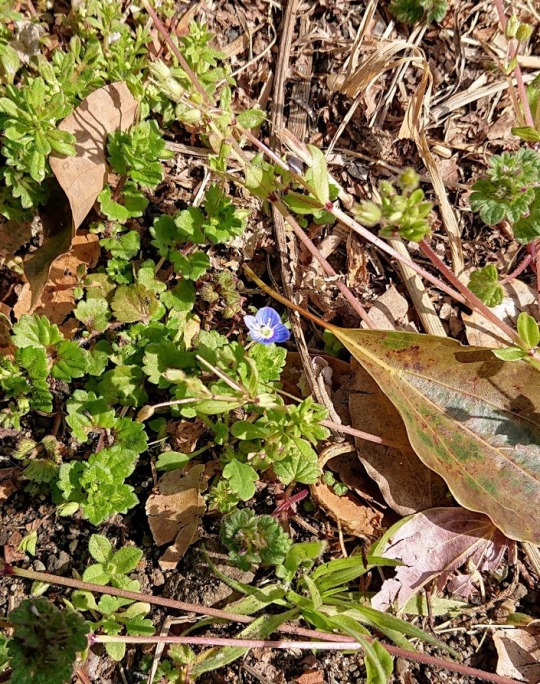

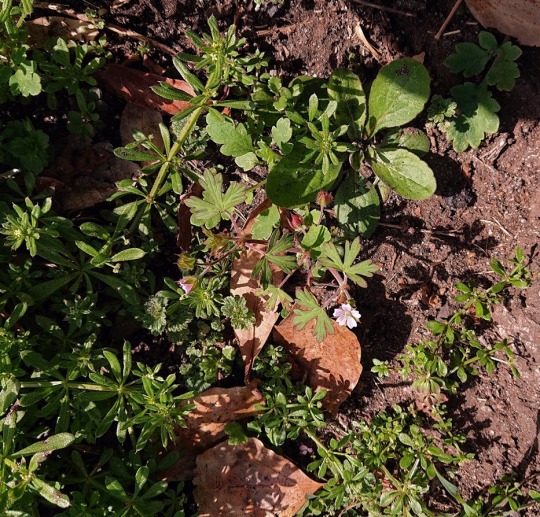

Tiny wildflowers! 道端で見かけた小さな小さな花たち 💠
ノボロギク(野襤褸菊)Senecio vulgaris / Common groundsel カラスノエンドウ(烏野豌豆)Common vetch オオイヌノフグリ(大犬の陰嚢)Veronica persica / Persian speedwell オオキバナカタバミ(大黄花片喰)Oxalis pes-caprae / Buttercup oxalis / Bermuda buttercup アメリカフウロ(亜米利加風露)Geranium carolinianum オオバタネツケバナ(大葉種漬花)Cardamine douglassii
#snapshot#spring#life#wildflowers#senecio vulgaris#common groundsel#common vetch#veronica persica#persian speedwell#oxalis pes-caprae#buttercup oxalis#bermuda buttercup#geranium carolinianum#cardamine douglassii#ノボロギク#カラスノエンドウ#オオイヌノフグリ#オオキバナカタバミ#アメリカフウロ#オオバタネツケバナ
35 notes
·
View notes
Photo

11 notes
·
View notes
Photo

Dew on grass with groundsel (Senecio vulgaris)
1 note
·
View note
Text
Flowers of the March of Maedhros (possibly part one, there are so many!)
flora, fauna, geography and environment of Arda
I love doing general flora and fauna posts but I can’t fit everything in them so I’m trying to make more specific ones as well! please please feel free to send categories to work on with locations! Or any environmental world building asks!
extensive environmental world building for himring plus more in the Himring tag
Himring was the fortress of Maedhros in the March of Maedhros, a cold realm in Northeastern Beleriand located slightly Southeast of Dorthonion and south of Lothlann and Ard Galen. It was a cold region with taiga forested hills and icy waters, including the sources of several rivers, namely Celon and Little Gelion. The March was located between the cold mountains on the Southern and Eastern borders of Dorthonion and the mountainous regions of the Gap and Thargelion on its own Eastern border. The cold likely comes from a combination of its proximity to the Ered Engrin and Ered Gorgoroth, especially given the boreal forested region of Dorthonion, as well as altitude in some parts of it. I go into this more on other posts.
The flora of the March is hardy, resistant to the cold that is present throughout so much of the year. Most flowers and herbaceous plants are herbaceous perennials that bloom in the spring and summer each year, sustained by their root stock despite the cold winters.
The March contains several habitats; boreal forests/taiga, montane steppes and meadows, riverbanks and marshier areas. Towards Maglor’s Gap, rocky outcrops including many of limestone invite plants that thrive on calcareous soils. Lothlann and Ard-galen were montane or boreal meadows. While boreal forest in many places is divided into three zones (closed forest where trees cover more than forty percent of the ground and have a dense layer of grass, high boreal or alpine and Southern boreal where croppings of temperate decidious trees might be found) I think the March and also Dorthonion which has some similarities in climate and ecology, would see a combination of these ecosystems.
Canon species: no canon species are associated with Himring, the March, or indeed much of Fëanorian occupied Eastern Beleriand
I use what we can extrapolate as possibly indigenous based on descriptions of climate, looking at similar real world locations, etc. I am also always happy to write posts based on real world locations by suggestion! (I’ve done the Havens of Sirion based on Southwestern Australia for example, etc. I think Tol Himling would have a similar climate to Hokkaidō).
-Mountain and red clovers bloom on the hills and meadow steppes in the late spring and summer. Arctic dandelion grows in the meadows in the North towards Lothlann and Ard Galen as does Annual Gypsophila, cutleaf coneflower, arctic harebell (also grows on stream banks), broadleaf chives, cow parsnip, longstalk starwort, heath violet
-Mountain avens grow in rocky outcrops throughout the hills around Himring, usually in the summer. Moss campion also grows throughout the hills, above the tree line. Nodding campion, heath grounsel, snow saxifrage, baneberry (also stream banks)
-Great spur violet, fireweed (especially in clearings), snowdrop, wall lettuce, wild tulip and grow in the forested areas. Boreal forests often contain berries and the forested areas around the hills has many species including bog bilberry, black crowberry, cloudberry, and wild strawberry.
-Alongside the rivers grows wood or alpine sorrel alongside glacier buttercup, Lapland buttercup, Arctic butterbur, one flower fleabane (which also grows in forested belts and meadows), alpine rockcress, moor king, wood ruff, alpine butterwort, and arctic or prickly rose.
-Arctic and common meadow rue grows in the North and West of the March in boggier areas as does milky whitlow grass, a flowering plant.
-Common Groundsel grows throughout the region
World building notes:
-A number of these species have medicinal uses
-Others are used as fodder, in salads, garnishes and other dishes or in teas
-storing and preserving plants of various kinds is highly utilized in the March, more so than other elven realms. Both flora with medicinal and culinary uses are frequently preserved through drying, fermentation or other methods
38 notes
·
View notes
Text

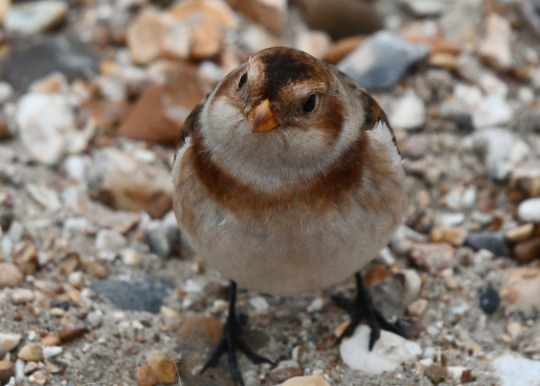
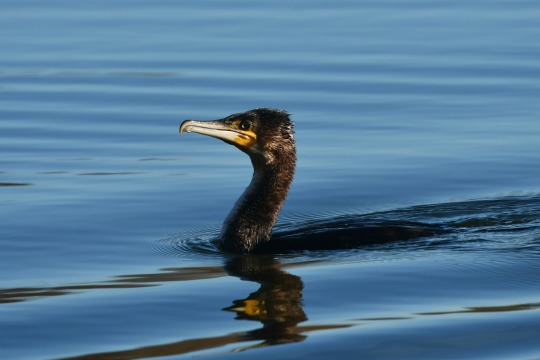

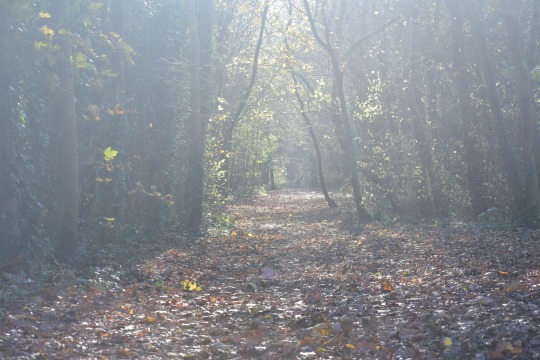






Eleven of my favourite photos I took in November 2024 and month summary
The photos are of; Great White Egret at Testwood Lakes, Snow Bunting at Sandy Point on Hayling Island, Cormorant at Lakeside Country Park, white deadnettle and view at Lakeside, Fallow Deer at Bolderwood in the New Forest, Red Admiral and shaggy scalycaps at Lakeside, red campion at Testwood Lakes, a characteristic sun going down whilst out view at this time of year at Pig Bush in the New Forest and the moon out the front.
November was another fantastic month of birds for me with a major highlight coming soon into it getting sensational views of the sumptuous Snow Bunting at Sandy Point and another fine species seen late on with only my third ever Red-necked Grebe seen at Weston Shore today. Other key birds seen this month included the seasonal delight of Redwings, Raven, Green Woodpecker, Ring-necked Parakeet, Greenfinch and Siskin. Glorious Great White Egret views, Grey Heron, Little Egret, Lapwing, Oystercatcher, Curlew, Wigeon, Teal, Shoveler, Pochard, Red-crested Pochard, Goosander and Egyptian, Greylag and Brent Geese brought a sprinkling of blissful wading birds and waterfowl to observe, evocative of autumn and winter for me. This month I also enjoyed seeing Buzzard, Red Kite, Jays, Kingfisher including at Winnall Moors and Lakeside in another strong month I had for them, Cormorant, Great Northern Diver, Slavonian Grebe, Mistle Thrush, Blackbirds, Robin, Great Tit, Blue Tit, Long-tailed Tit, Wren, Pied Wagtail and Tufted Ducks and Mute Swans which were especially nice to see on patch at Lakeside and a young one in Winchester respectively. Common Gull was another key bird seen this month with one returning to Lakeside which is always thrilling to see, with Herring Gulls enjoyed there too. I also took pleasure in some great Winchester Peregrine and Grey Wagtail and Lakeside Great Crested Grebe, Coot and Moorhen views this month. A dashing male Sparrowhawk at home was another special bird to see.
I got fine and immersive views of Fallow and Roe Deer this month, seeing a fair few New Forest Ponies, Grey Seal, Grey Squirrels and Brown Rats too. There was still some butterfly interest this month with some great views of a Red Admiral at Lakeside. Bee, wasp and hoverfly including marmalade hoverfly were also nice to see with Grey Silverfish and spiders seen well at home. It was a good month for plants still with a fair bit seen flowering including knapweed, marsh thistle, red campion, herb-Robert, hedgerow crane’s-bill, periwinkle, hedge woundwort, red clover, some early winter heliotrope and violet at and near Lakeside, hogweed, wild carrot, ragwort, petty spurge, dock, white deadnettle, stinging nettle, red deadnettle, groundsel, ivy-leaved toadflax, viper’s-bugloss, scentless mayweed, sea mayweed, oxeye daisy, daisy, dandelion, oxtongue, sow thistle, buttercups, ivy, rock samphire, red valerian, evening primrose, gorse, common heather, bell heather and cross-leaved heath. I enjoyed observing seed heads a lot this month with teasel, fleabane, spear and creeping thistle, wild carrot, hogweed, old man’s beard, purple loosestrife and hemp agrimony standing out and leaves including common toadflax, thistle and ferns. Apple, privet berries, rose hips and holly berries led the way for fruit seen.
Fungi once again played a key role in my month as I was captivated by enigmatic shaggy scalycaps and intricate patterns of turkey tail at Lakeside with the latter seen elsewhere too. Crowded parchment, waxcaps, dung-loving deconica, possible winter russula, pleated inkcap, earthball and parasol in a good autumn I’ve had for them and a notable new one for me seen a couple of times in the New Forest handsome club were other highlights. I also liked seeing moss and lichen including oakmoss. I took in a lot of charming landscape and sky scenes this month again with the splendour of autumnal colour continuing to grip the landscape giving way to morning frost scenes as winter crept in towards the end. Sunsets, sunrises and some great full moon scenes were wonderful to take in this month too alongside lake, wetland, coastal and New Forest woodland and heath vistas. Wishing you all a great December.
#november#snow bunting#cormorant#great white egret#kingfisher#red admiral#shaggy scalycap#new forest#hayling island#hampshire#lakeside country park#eastleigh#winnall moors#testwood lakes#winchester#white deadnettle#red campion#europe#england#uk#earth#nature#reflections#photography#walking#birdwatching#moon#sunset#home
8 notes
·
View notes
Text




Sea thrift (Armeria maritima), groundsel (Senecio vulgaris), birds foot trefoil(Lotus corniculatus, aka eggs and bacon which is a delightful name) and Geranium robertianum which has a whole number of common names: red robin, death come quickly, fox geranium, stinking Bob, squinter-pip
7 notes
·
View notes